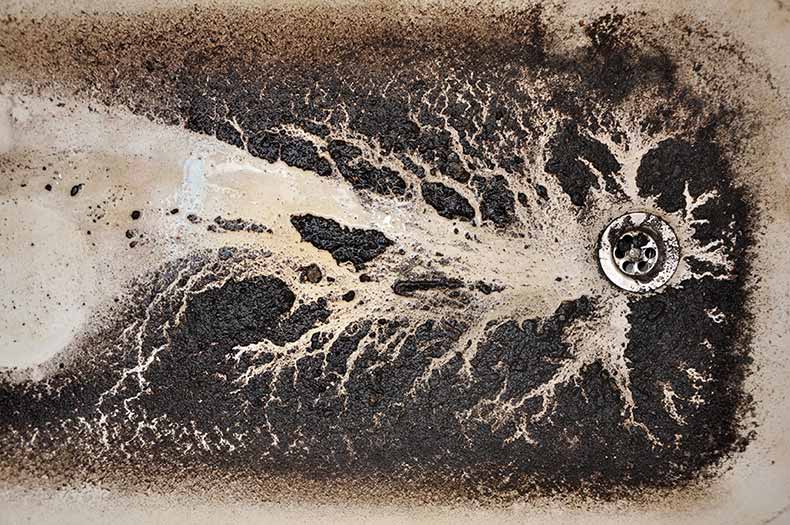Top Reasons for Waste Coming Up in the Bathtub
Top Reasons for Waste Coming Up in the Bathtub
Blog Article
What're your insights and beliefs about What to Do if Sewage Starts Coming Up Through Your Bathtub?

Sewer back-up in the bath tub can be a traumatic and unhygienic problem for any home owner. Not just is it inconvenient, however it additionally presents major wellness dangers and shows underlying issues with the plumbing system. Recognizing why sewage is turning up via the bath tub is important for taking appropriate action to deal with the trouble effectively.
Intro to the Issue
Typical Reasons for Sewage Backup
Clogs in the Sewage System Line
One of one of the most common root causes of sewer backup is an obstruction in the sewer line. This can happen as a result of the buildup of particles, grease, or foreign objects in the pipelines, avoiding correct flow and creating sewage to support into your bath tub.
Tree Origin Intrusion
Tree origins looking for dampness and nutrients can infiltrate sewer lines through little splits or joints. In time, these origins can expand and broaden, causing substantial damage to the pipes and causing sewage backup concerns.
Recognizing the Problem
When sewer starts backing up right into the bathtub, it's a clear indicator of a trouble with the drain system. The wastewater that must be flowing far from your home is rather discovering its back into your space, which can lead to substantial damages and health hazards.
Possible Causes
Several variables can contribute to sewage backup in the bathtub. From obstructions in the sewer line to issues with the plumbing framework, recognizing the origin is vital for discovering an option.
Aging Facilities
Older homes may have obsoleted plumbing systems that are extra prone to deterioration, splits, and wear and tear. As pipes age, they end up being much more prone to leaks and obstructions, raising the possibility of sewage backup incidents.
Heavy Rainfall or Flooding
Throughout durations of heavy rainfall or flooding, the drain system might come to be overwhelmed with excess water, creating back-ups and overflows. This can lead to sewage supporting right into tubs and various other fixtures inside the home.
Signs of Sewer Backup
Foul Odors
Undesirable odors originating from drains pipes or components, particularly in the shower room, may indicate sewer back-up concerns. These odors are frequently strong and persistent, signaling a problem that requires immediate focus.
Slow Draining Fixtures
Bathtubs, sinks, and commodes that drain pipes gradually or otherwise in all could be experiencing sewer back-up. If several fixtures are impacted all at once, it's likely that the concern stems from a common factor, such as the major drain line.
Gurgling Noises
Unusual gurgling or bubbling sounds originating from drains pipes when water is running in other places in your home are indicative of air trapped in the plumbing system. This air accumulation can arise from sewage backup and should be checked out quickly.
Wellness Dangers Connected With Sewage Back-up
Contamination of Water System
Sewage back-up can contaminate the water supply in your house, presenting a severe health threat to you and your family. Direct exposure to infected water can bring about stomach concerns, skin infections, and various other illnesses.
Mold and mildew Development
Moisture from sewage backup can develop optimal problems for mold and mildew development in your house. Mold spores can exacerbate respiratory problems and create allergies in delicate people, making prompt cleaning necessary.
Spread of Condition
Sewage contains harmful microorganisms, infections, and bloodsuckers that can cause a variety of conditions, including liver disease, cholera, and gastroenteritis. Coming into contact with sewage or polluted surface areas puts you in danger of infection.
Cleaning Up After Sewage Back-up
Sanitation Procedures
Thoroughly disinfect and sanitize affected locations after sewer back-up to remove hazardous bacteria and avoid mold and mildew growth. Usage appropriate cleansing products and protective equipment to guarantee risk-free and reliable clean-up.
Repair of Affected Locations
Fix any damages to floor covering, wall surfaces, or fixtures caused by sewer backup. Depending upon the extent of the damage, you might need to replace carpeting, drywall, or other products to recover your home to its pre-loss problem.
Immediate Actions to Take
Turning Off Water
In the event of sewer back-up, it's necessary to shut off the water supply to prevent additional contamination and damage. Find the main water shutoff valve in your home and shut it off till the problem can be solved.
Contacting a Specialist Plumber
Handling sewage back-up is not a DIY work. Call a certified plumber with experience in taking care of sewage-related problems to examine the situation and perform essential repair services or cleanups.
Preventing Contact with Contaminated Water
Until the sewage backup is settled, avoid contact with polluted water to stop the spread of bacteria and pathogens. Use safety gear if you must be in the afflicted area and wash your hands thoroughly later.
Safety nets
Routine Upkeep of Drain Lines
Schedule regular assessments and maintenance of your sewage system lines to identify and address possible concerns before they intensify into significant troubles. This can include cleaning out debris, checking for tree origin breach, and fixing any broken pipelines.
Setting Up Backwater Valves
Take into consideration installing bayou shutoffs in your plumbing system to prevent sewage from flowing back right into your home during periods of heavy rainfall or flooding. These valves automatically close when water draws back up, shielding your residential property from contamination.
Proper Disposal of Family Waste
Prevent flushing anything apart from bathroom tissue and human waste down the bathroom to stop obstructions and obstructions in the sewer line. Dispose of oil, oil, and other household chemicals properly to minimize the threat of plumbing issues.
Why Is Water Backing Up in My Bathtub When I Flush My Toilet?
What to do about a sewer line clog
First, don’t bother with plunging. No amount of plunging will dislodge the clog in a sewer line. The clog is too far away. Plungers are for clogs in the toilet itself, not the sewer line. Plus, the most likely causes of a sewer clog are:
Tree roots Flushed toys or feminine products Grease buildup Those items don’t move easily. And in the case of tree roots, the roots need to be cut out of the pipe and the pipe will need to be repaired.
You’ll need a closet auger. A closet auger is a type of plumber’s snake with a protective cover to keep from scratching the delicate porcelain toilet. If the clog is further down, you may need to remove the toilet or use one of your cleanouts to get to the clog.
We also recommend doing a video inspection of the drain to ensure that the cause of the clog has been completely removed. Otherwise, you could have the same problem again in a few days or weeks.
https://mspplumbingheatingair.com/blog/why-is-water-backing-up-in-my-bathtub-when-i-flush-my-toilet

Do you enjoy reading up on ? Create feedback down below. We would be pleased to listen to your opinions about this blog entry. Hoping that you visit us again later on. Sharing is caring. Helping others is fun. Thanks a lot for taking the time to read it.
Additional Information
Report this page